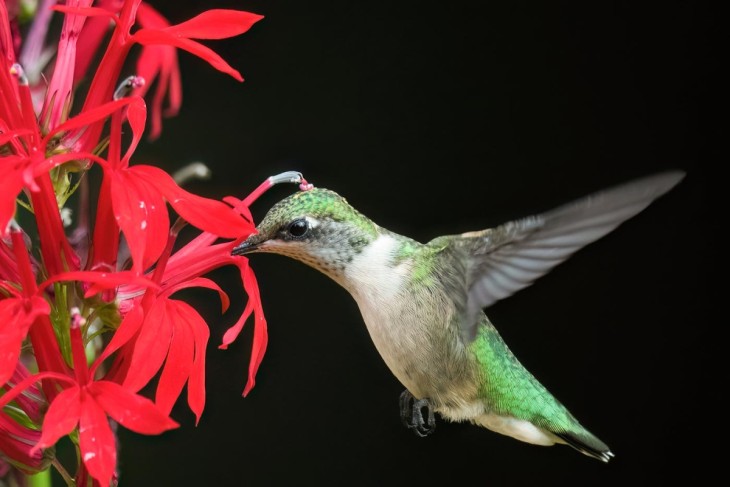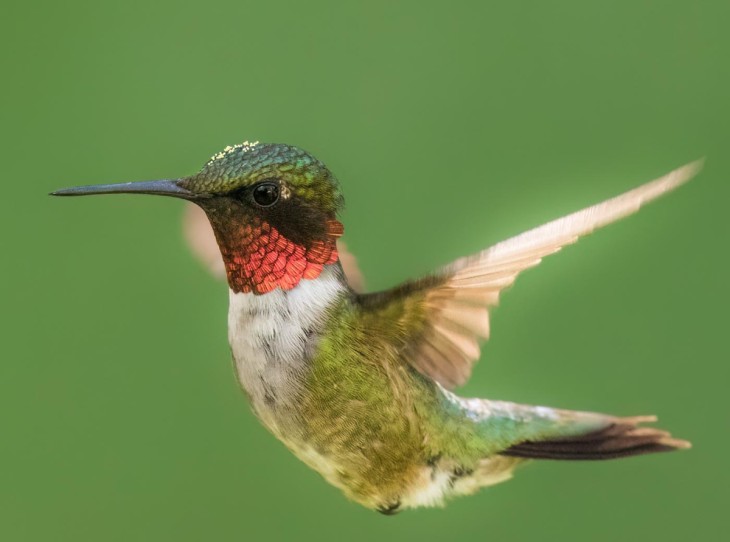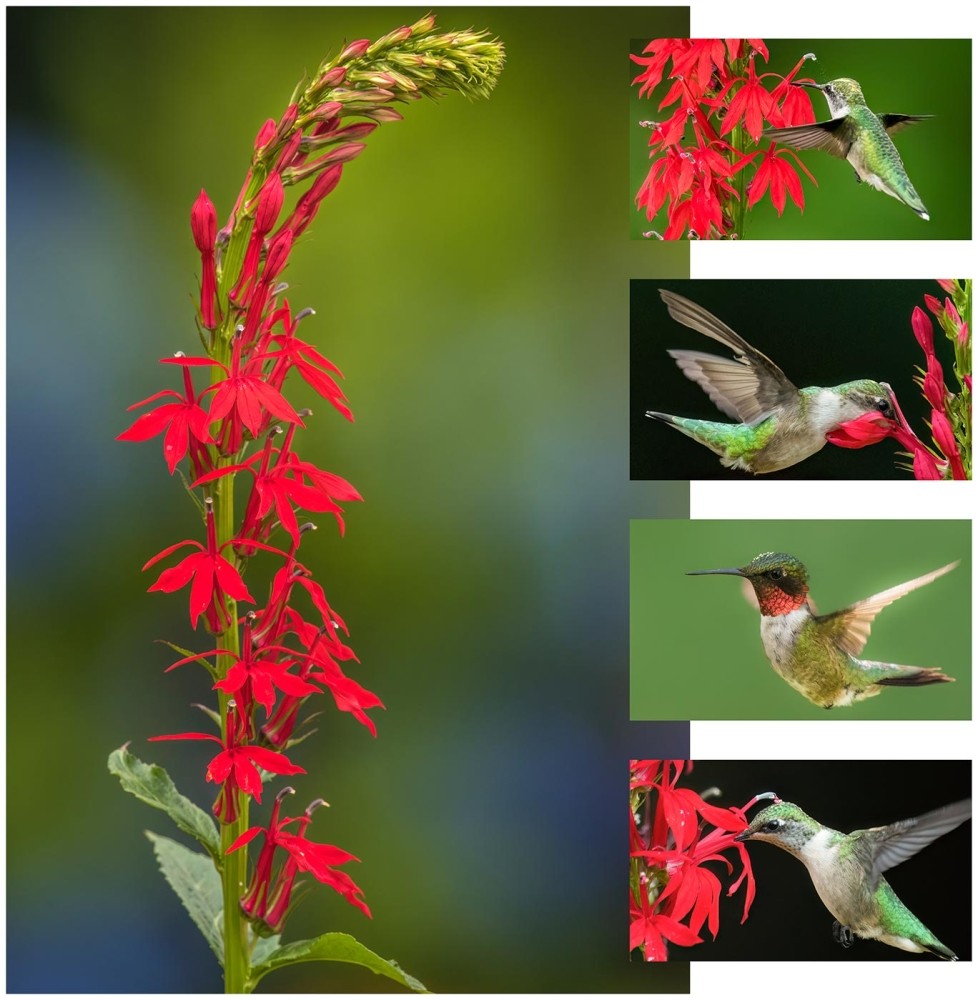
The natural world holds countless examples of things intricately connected and seemingly perfectly designed. One spectacular example is the relationship between the ruby-throated hummingbird (Archilochus colubris) and the cardinal flower (Lobelia cardinalis). A member of the lobelia family, cardinal flower grows throughout the eastern half of North America, often in moist soils and at the edges of wetlands. Its brilliant red flowers bloom on long racemes from mid- to late summer. Some bees “rob” the nectar, which sits deep within the flower, by biting into the base of a bloom. Other pollinators – including some species of swallowtail butterflies – use their long proboscises to reach the nectar. In the Northeast, however, only the ruby-throated hummingbird is an effective pollinator of the cardinal flower.
Photographer Laurie Dirkx captured these images, which illustrate the hummingbird-cardinal flower relationship, over the course of two summers as hummingbirds visited the self-seeded cardinal flowers in her perennial garden. Always conscious of how her presence may affect wildlife, Dirkx used her longest lens (500 mm) and spent minimal time in the yard, camera pointed toward the shade. “The cardinal flowers have been in my garden for six years now,” she said. “But it wasn’t until a couple of years after they appeared – when I saw pollen on the forehead of one of the birds I’d photographed – that I began to understand this incredible process.”
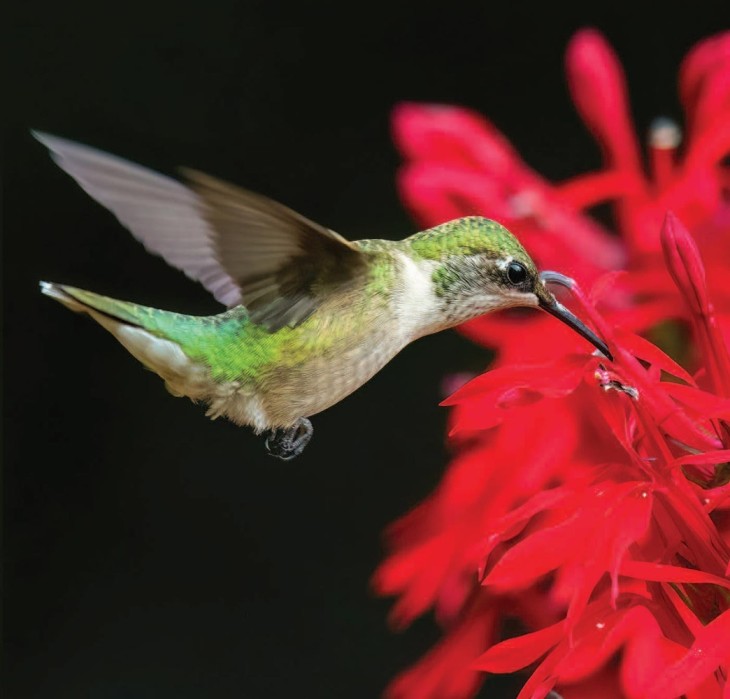
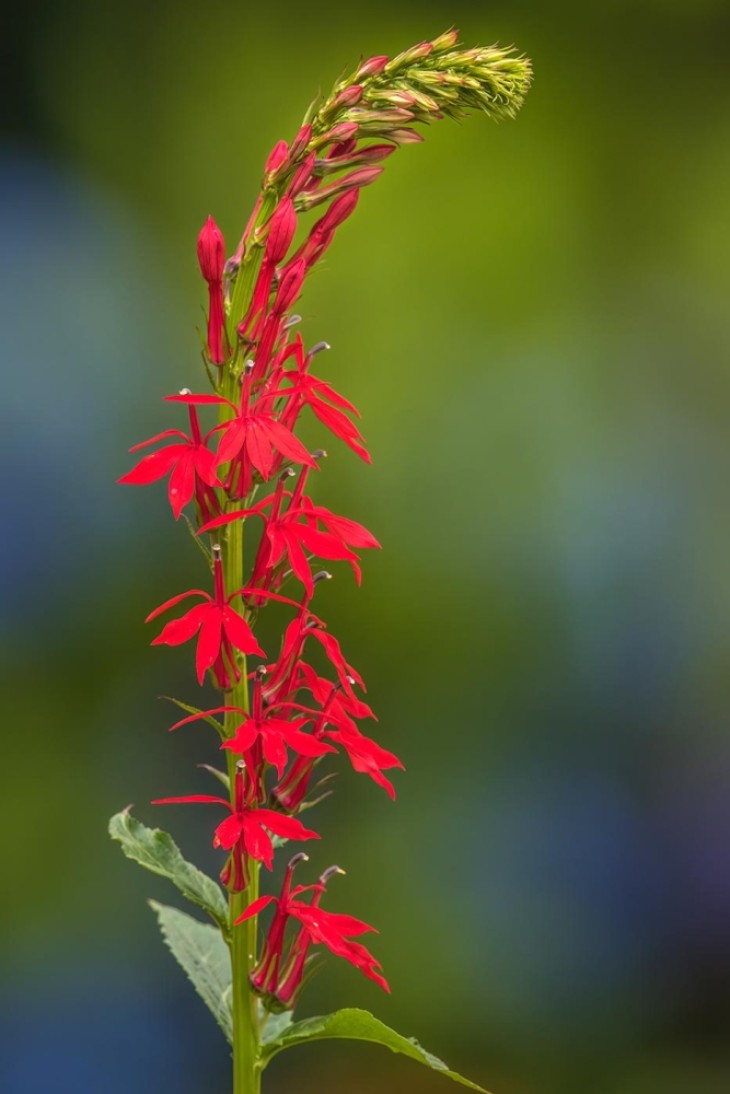
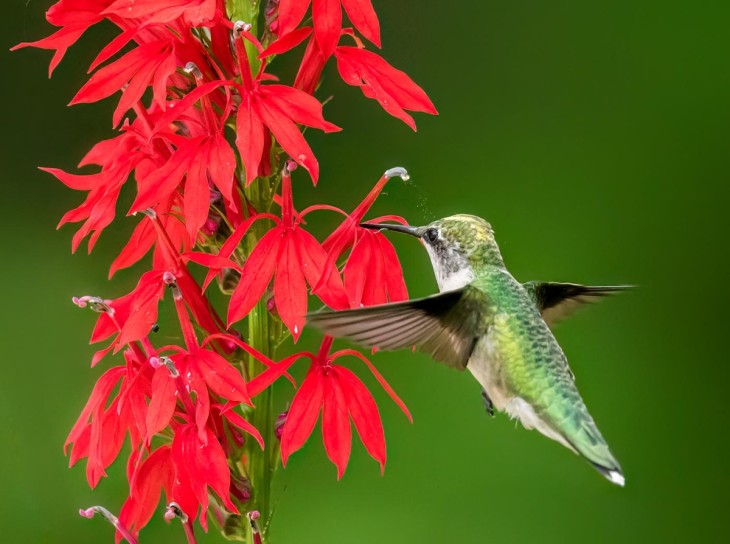


Left: During the male phase, each flower comprises five anthers fused together, which is the curved, gray structure shown here. The white hair-like filaments, sometimes called a “beard,” may help make the pollen more available to pollinators.
Right: During the female phase of the flower, the two-lobed stigma, shown here, pushes through the end of the style and is receptive to pollen.
